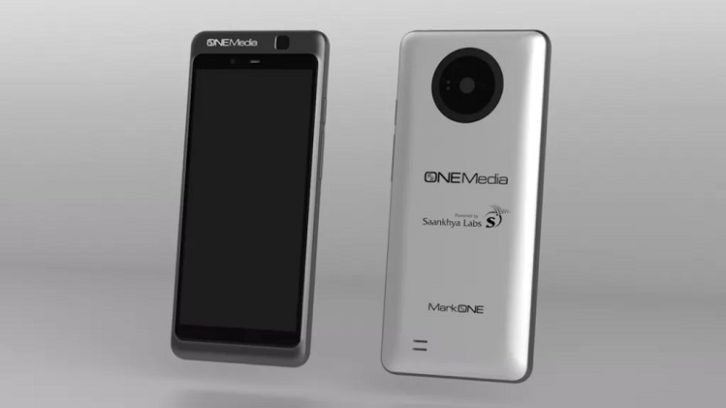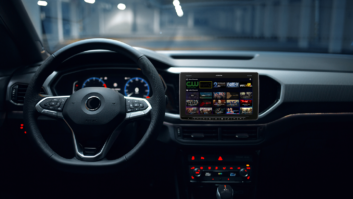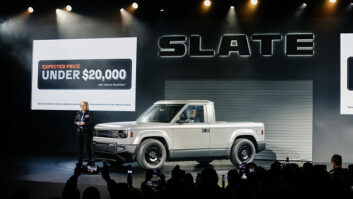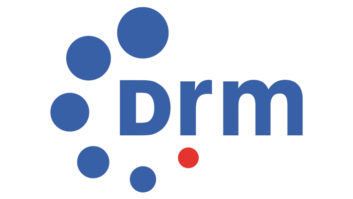
It may be a little early for radio groups or SiriusXM to get worried, but they might want to take a close look at what Sinclair Broadcast Group is doing in Seattle.
This month the company is launching ATSC 3.0 over-the-air delivery of four Sinclair radio stations in the market as part of its STIRR XT digital audio service.
OTA simulcasts of KVI(AM), KOMO(AM), KOMO(FM) and KPLZ(FM) will complement 15 digital audio channels already being delivered “over the top” as part of STIRR XT.
When it announced the plan a couple of months ago, Sinclair VP of Technology Strategy Michael Bouchard was quoted in the press release saying the technology “lays the groundwork for our future plans of enhancing the reception of terrestrial over-the-air radio services throughout the country, as NextGen TV is deployed by broadcasters everywhere.”
From a strategic point of view, the rollout — while initially modest — demonstrates Sinclair’s commitment to delivery of more than better-looking and sounding television via ATSC 3.0, says Mark Aitken, senior vice president, advanced technology, for Sinclair and the president of its ONE Media 3.0 business.
“One of the reasons we are doing this is because the automotive guys always ask: ‘Is there an alternative to digital radio [and] to SiriusXM that can be delivered via the ATSC 3.0 standard?’” he says.
While acknowledging it is “early in the game,” Sinclair is hoping these “Seattle 3.0” radio simulcasts — the first of many to launch in the broadcaster’s ATSC 3.0 markets — will pique the interest of automakers as they plan for the future, he says.
Automakers need a minimum of three years to add anything to what’s on the drawing board. The launch of STIRR XT OTA today just might be enough to nudge them into including 3.0 receivers in future models, he says.
“We think there is a real compelling reason to consider the inclusion of ATSC 3 receivers in cars,” says Aitken. “Once you’ve done that, all of the other opportunities for what can be carried in that digital spectrum open up.”
Frequently cited use cases for ATSC 3.0 in vehicles include delivery of in-car entertainment, map and navigation data and fleet-wide software updates for computer-controlled automotive tech.
NextGen TV hybrid service
Like ATSC 3.0 itself, the combined STIRR XT is a hybrid service — part OTA and part OTT, or “over the top.”
When the 3.0 radio simulcasts launch, only NextGen TV sets and gateway owners in Seattle will be able to receive them. However, in October 2020 Sinclair revealed early production samples of its Mark One smartphone with built-in 3.0 receiver. These phones and other expected 3.0 consumer devices will make mobile reception of OTA 3.0 digital audio a reality one day, says Aitken.

“We truly will be delivering radio broadcast content — just delivered over a different spectrum,” says Aitken. “It’s not FM; it’s television spectrum.”
Consumers access STIRR XT via the STIRR Radio broadcast app available universally on televisions labeled as NextGen TV sets. When consumers launch the app, they can navigate to STIRR Radio to begin enjoying OTT- and OTA-delivered digital audio channels, he says.
Sinclair has been in discussions with other broadcasters about simulcasting their radio stations over the air via ATSC 3.0 with STIRR XT in markets where the station group has no radio stations, says Aitken, who said the service at launch will be purely ad-supported.
XHE-AAC codec and ATSC 3.0
STIRR XT audio channels delivered over the top are being encoded using the Dolby AC-4 audio codec, which is specified to be used in North America as part of the ATSC 3.0 standard.
However, Sinclair has other plans for STIRR XT channels delivered over the air. Rather than AC-4, the station group will encode OTA audio channels using the xHE-AAC (Extended High-Efficiency Advanced Audio Coding) codec.
“We are working on integrating a broadcast app-delivered highly efficient radio audio codec, which is not technically supported in the ATSC 3.0 standard,” says Aitken. “But because this is all IP — and this is the magic of IP — that broadcast app will deliver a player for an audio codec that does not exist in the ATSC 3.0 standard.”
Motivating Sinclair’s choice of xHE-AAC for OTA-delivered STIRR XT is bandwidth efficiency, says Aitken. With xHE-AAC, Aitken predicts significant bandwidth savings.
For example, a stereo audio channel encoded with AC-4 requires 96 kilobits per second, while the same channel needs just 24 kbps when encoded using xHE-AAC, he says.
The extra efficient codec also puts Sinclair’s STIRR XT OTA delivery in line with what’s going on around the world in digital radio, he says.
“xHE-AAC is the audio codec that is part of the digital radio standard called Digital Radio Mondiale,” says Aitken. “It is deployed globally, and it is in fact the most efficient commercially available codec.”
Adopting the Digital Radio Mondiale framework in the STIRR Radio broadcast app ensures that all of the tools for radio functionality are already available, he adds.
The Seattle rollout of STIRR XT follows Sinclair’s initial deployment in Oklahoma City. Sinclair plans to make STIRR XT available in all of its ATSC 3.0 markets.
“The whole point here is that we are using STIRR as a backbone piece of our OTT-OTA convergence strategy,” says Aitken. “We are bringing to bear all of the tools and all of the assets that we can to step forward with a competitive foot with the services we can offer.”







